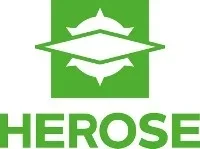At HEROSE, all manufactured valves and fittings are tested for 100 per cent stability and function. No valve leaves the factory untested. The classification societies – which are the ship’s TOV, so to speak- demand additional tests in the presence of an inspector. The inspector’s class approval con firms the proper function and safety of the component. This results in tested and certified valves in the shipbuilding industry, forming the basis for the international commercial operation of ships.

After the test, the DN150 valve is removed by crane from the liquid nitrogen.
Twenty four stability and cryogenic tests in two days
Nadine Schlichting organised the class approval on these two days in September – on the one hand, all documentation for the valves to be tested has to be available and interlinked; on the other hand, the valves themselves have to be assembled in good time and then be available for the class approval in the approval station and in the HEROSE test facility. A certain inspection lot of the complete order is presented to the classification society in consultation with the customer.
In April this year, Nadine Schlichting celebrated her 10th anniversary at HEROSE, so she has a lot of experience and knows where things can go wrong and how to avoid such situations. For each test, she is provided with the requirements for the mate rial and the test, and then assigns the acceptance numbers. Altogether 24 tests were prepared for the two days. She also ensures that test reports concerning dye penetration, X-ray and ultrasonic tests are available.
Tested technology for a standardised testing process
In the test field at HEROSE, Timo Kon rad and Daniel Obaseki connected the first three test specimens to the testing device and used liquid nitrogen to cool them down to minus 196 °C in the tanks. In the case of the big DN150 valve, which weighs around 250 kilos with the test device, the cooling down process started at 6.00 am. It takes time for the entire valve body to cool down. This is quicker with the smaller models.

RINA inspector Adinan lsacai supervises the test procedure in the HEROSE test field.
The valves to be tested are put into a device with a defined torque. Helium is used as the test medium. The valve is then tested in a cryogenic environment over defined time intervals. A fitted actuator is shielded in such a way that it is not affected by the cryogenic nitrogen and remains functional. Once the test is complete, the test object is brought back to ambient temperature.
Inspector Adinan lsacai from the Italian classification society, RINA, is attending the inspection today. The valves that were being tested are part of a delivery for two ships that will be powered by LNG: a vehicle and pas senger ferry that will be built in Italy, and a cruise ship that will be built at the Meyer shipyard. After the successful class inspection, all valves and fittings receive the stamp of the classification society through the inspector’s marking stamp.

